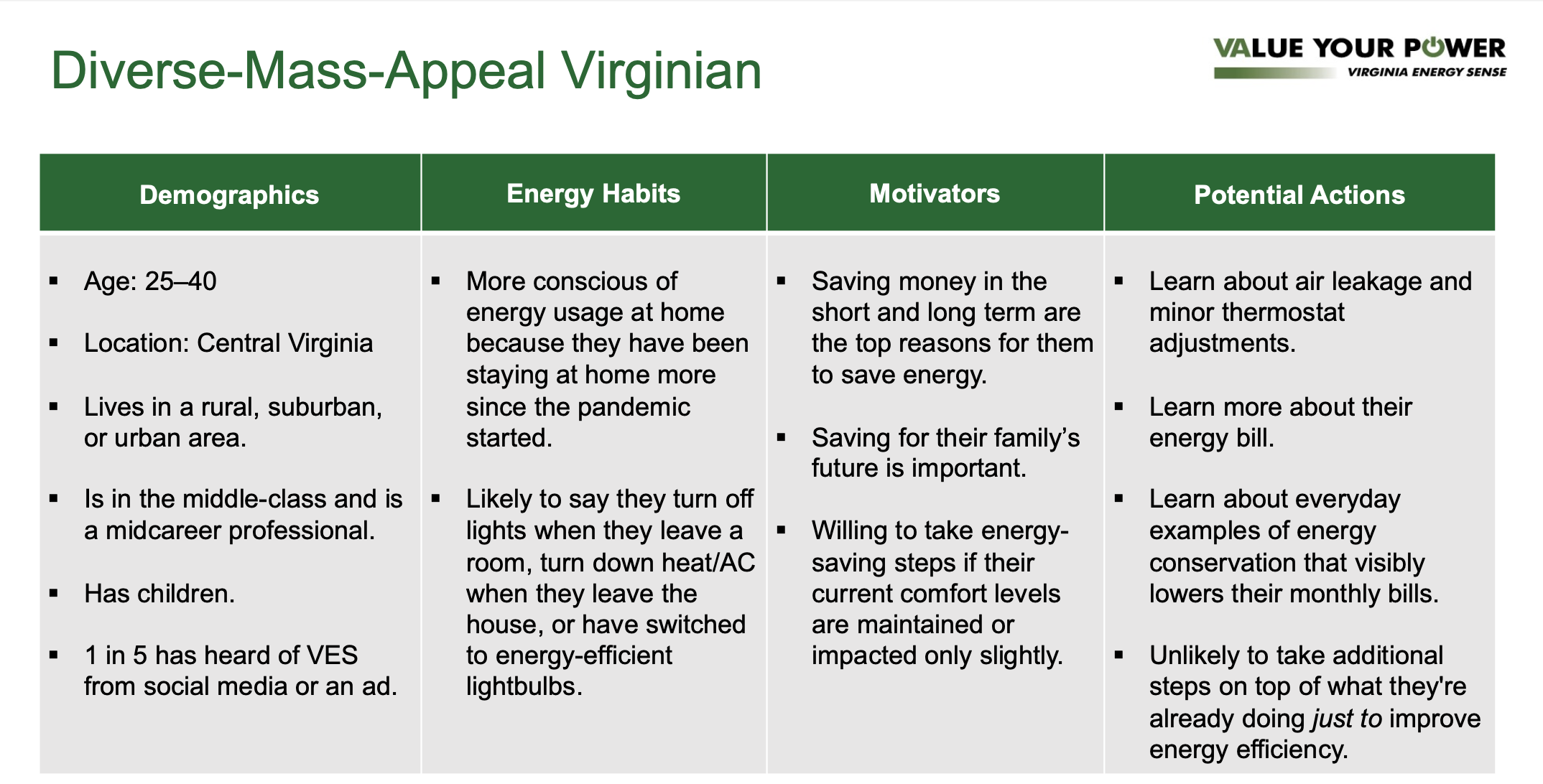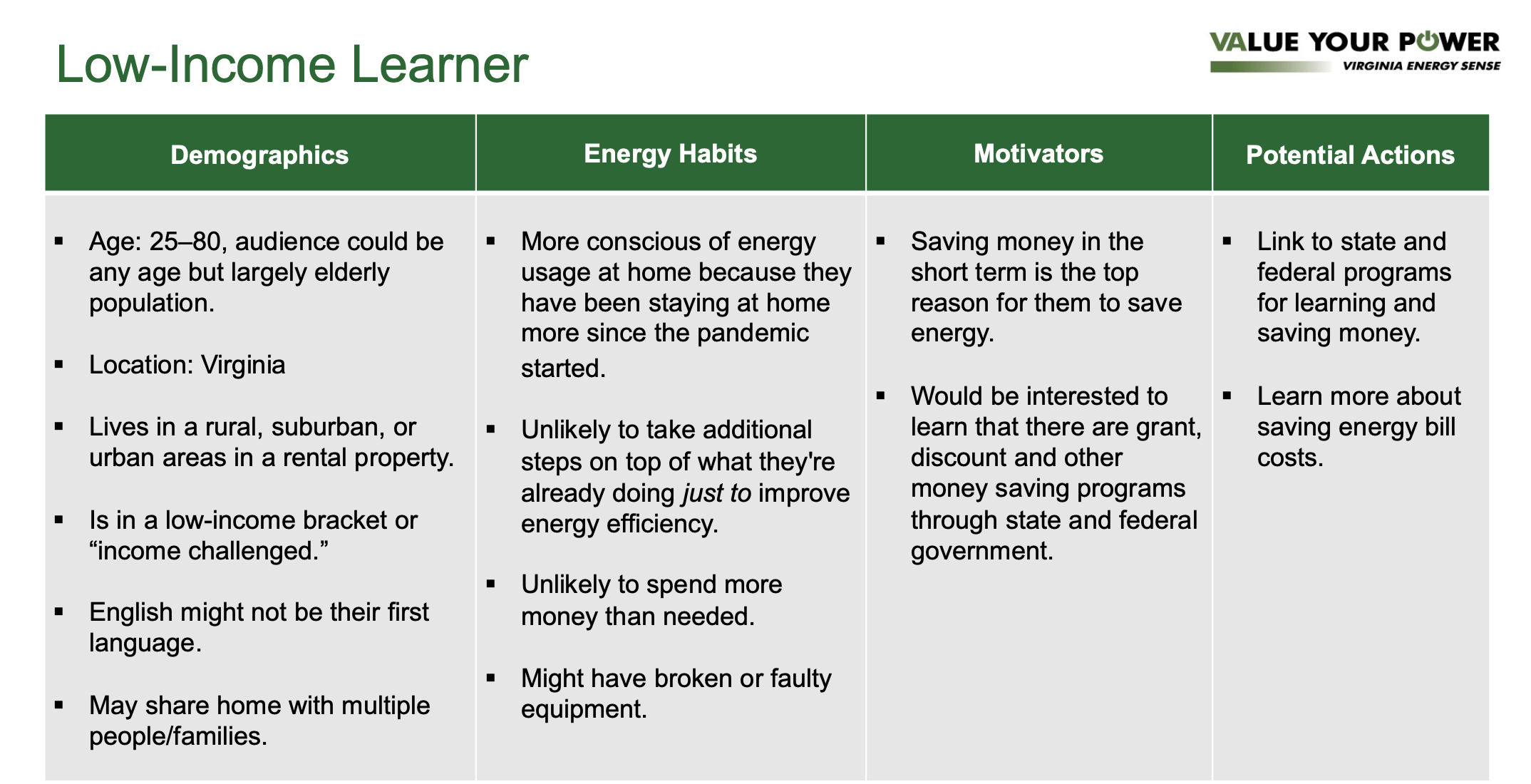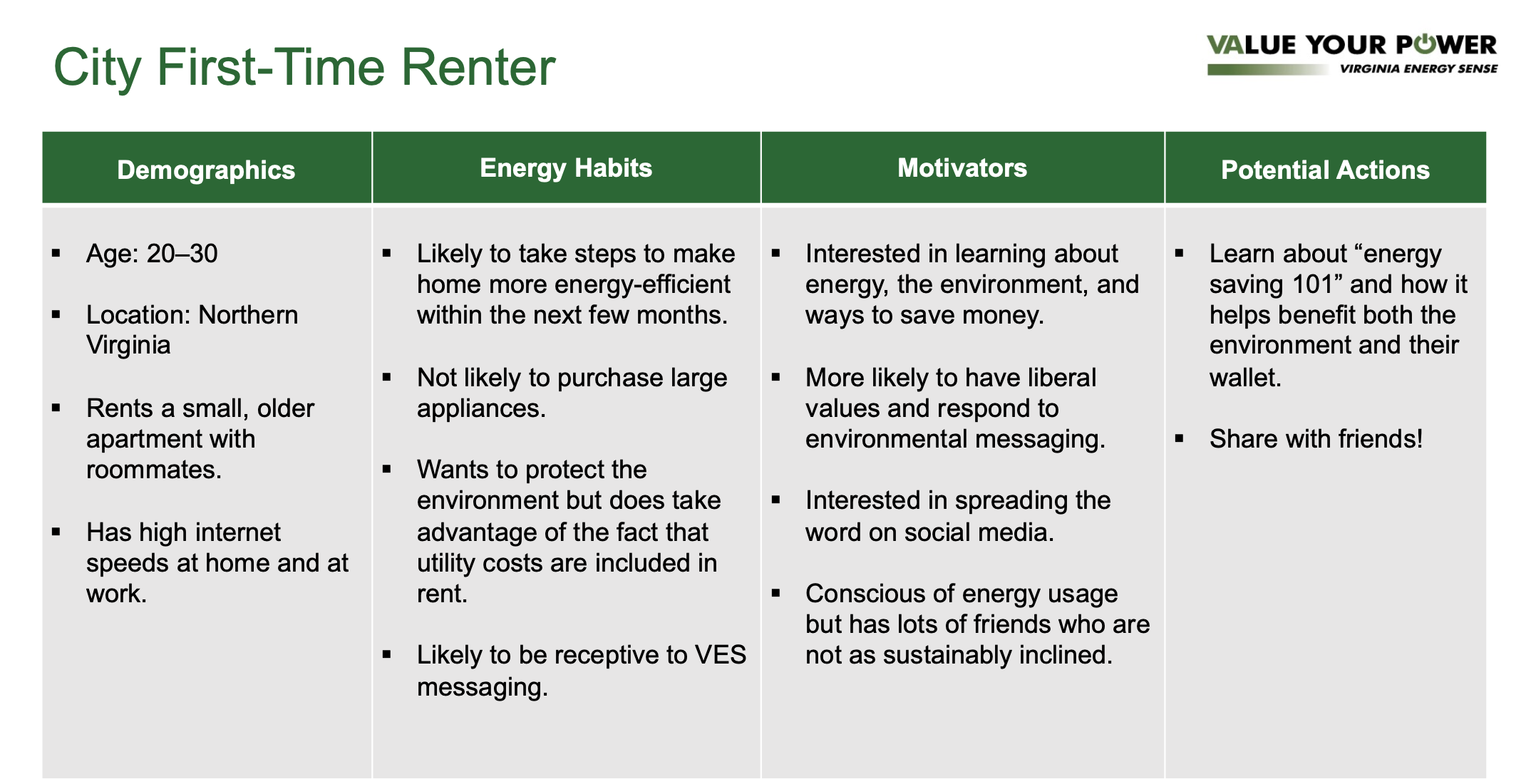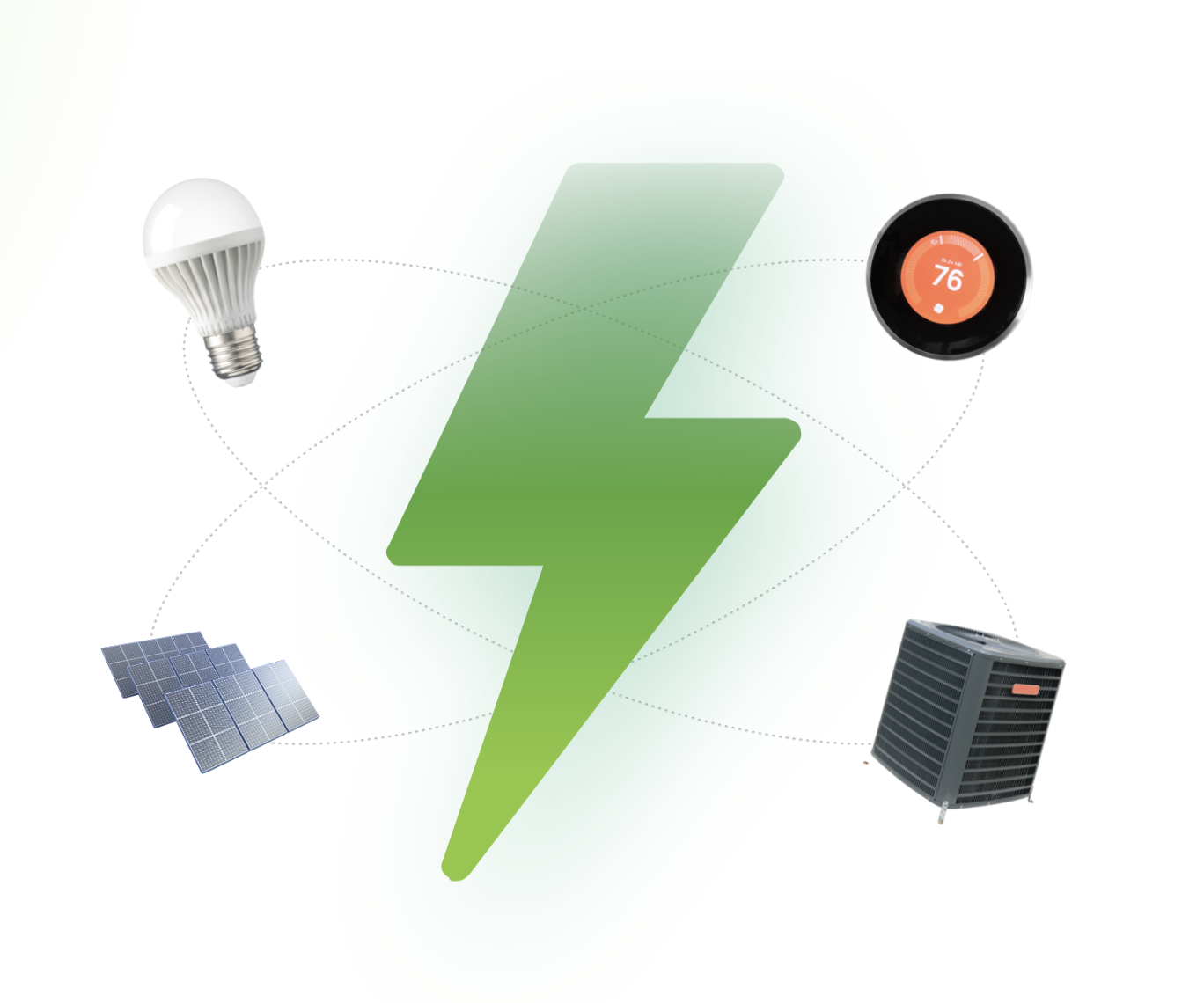Case Study Approach
Social Listening
Social listening is the examination of publicly viewable social media posts through keyword queries.
Sources are Twitter, Reddit, Instagram, YouTube, Facebook, blogs, and forums.
Used the tool Synthesio to aggregate and analyze data.
Examined posts from September 1, 2020, to August 31, 2021. Posts examined included:
Those mentioning Virginia Energy Sense
Those about saving money on electric or utility bills
Those about household energy reduction
Owned Social Channels
Scanned all VES-owned channels to review platform performance, content posted, and engagements for 2021.
Keyword Search
Used SEMRush to analyze traffic to the VES website over the past year as well as keyword opportunities in the consumer energy sector.
PR and Partnerships
Analyzed news pieces published from September 1, 2020, to September 1, 2021, that mentioned Virginia Energy Sense or consumer energy-related terms.
We analyzed articles, blog posts, and news releases published on the VES website over the same time period to identify opportunities for promoting new initiatives, partnerships, and success stories.
We reviewed VES’ current partnership list for opportunities to re-engage partners and expand the list.
Website
Google Analytics review
Purpose: Identify opportunities, trends, and themes that we will refer to throughout the UX design process.
Identified and analyzed search terms, website traffic sources, and popular pages on VirginiaEnergySense.org.
Web content inventory and ROT (redundant, obsolete, trivial) audit
Purpose: Ensure that content on VirginiaEnergySense.org remains unique, relevant, and findable. Create the organizational logic for redesigning the website.
Worked through pages on VirginiaEnergySense.org to determine what content is redundant, what must stay, and what can be retired.
User experience (UX) audit
Purpose: Devise website enhancements that can occur before and after the website redesign.
Our user experience analyst evaluated the current website using key measures, including mobile friendliness, ease of navigation, content and design quality, legibility, and ease of task completion.
User Personas
Summary
Content/Messaging: Through research, we identified two main stages in the user journey: Awareness/Motivation and Ready To Act.
These are the two phases audience members move through: First they learn why it’s important to save energy, and then they move into the action phase.
Our KPIs and messaging will differ by phase to reflect these groups.
Audiences: Within each user journey stage, there are multiple audiences with different motivators and awareness levels.
Examples of these audiences are new homeowners, Gen Z’ers moving into their first apartments, and rural homeowners.
We will create messaging to reach audiences ranging from completely unaware of energy saving and its benefits to fully committed and ready to make changes.
Channels: No one platform by itself can reach all the various audiences across Virginia.
It will take a coordinated messaging and campaign effort — spanning digital paid media, earned media placements, and owned social media — to get information out.
Recommendations
Offer tips and tricks that are easy to implement, like thermostat changes.
Embrace seasonality by posting more during times of peak interest.
Introduce new content types and messaging to drum up engagements.
Reintroduce channels like Instagram with a new look and feel aligned with the upcoming content strategy.
Focus messaging and keyword strategy on specific, achievable tasks instead of general energy saving terms.
In the long term, optimize pages and content to increase traffic from search engines.
Findings
VES and its website are mentioned very infrequently on social media.
There were 74 mentions between September 2020 and August 2021, mostly from other Virginia-based organizations.
Many posts that receive high engagement frame ways to reduce your energy bill as “hacks” or in a list of “tips and tricks.”
These tips are quick and easy actions, and using thermostats efficiently is the energy-saving topic that with the most mentions.
There are notable conversations about reducing the cost of electric bills online that VES can capitalize on. These are primarily about energy reduction broadly, but there is a significant conversation about specific tips, as shown on the next slide.
There were 163,495 posts between September 2020 and August 2021, with consistent volume throughout the year (except for slight increases in July and February).
Conversation appears to be primarily taking place in urban areas nationwide. The city that accounted for the most mentions was Washington, because of political discussions about climate change.





